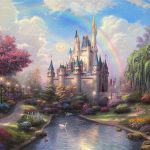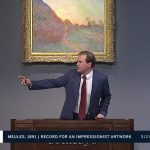How Anatole Krasnyansky Elevates the Watercolor Medium to New Heights
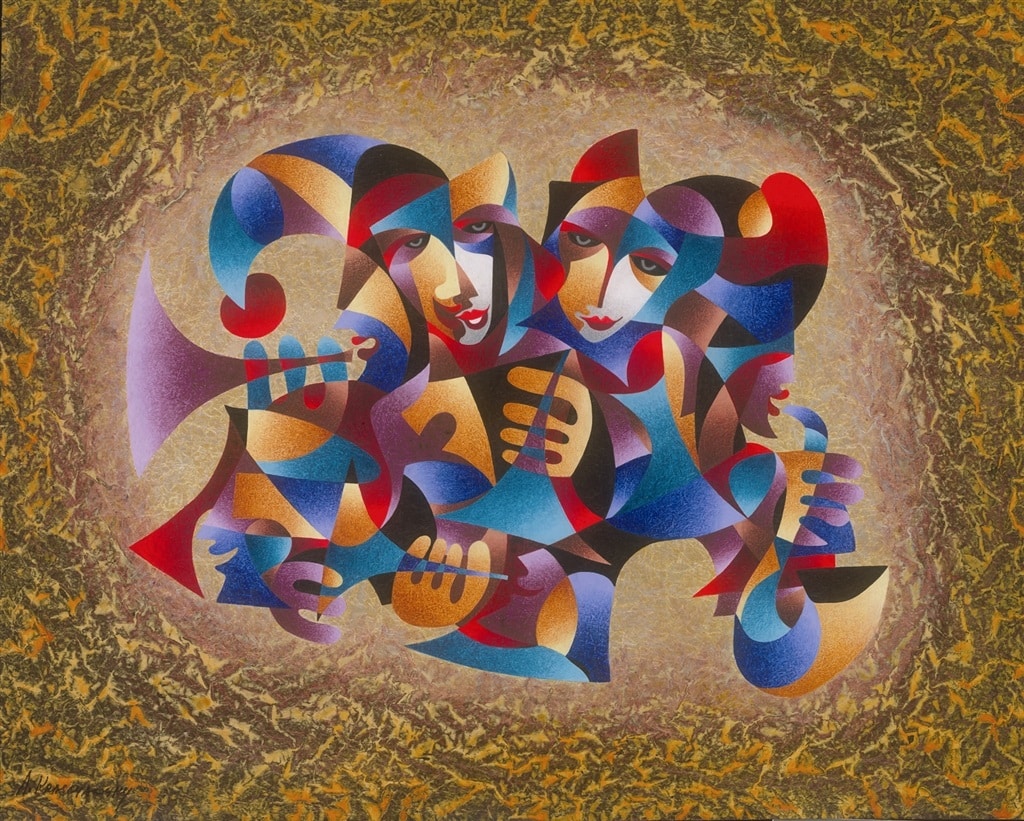
“Jazz Ensemble” (2008), Anatole Krasnyansky
Ask any artist and they’ll tell you that watercolor is a particularly tricky medium to work with.
There’s a constant struggle to keep the perfect balance of water and pigment, the artist can’t always control how the medium dries, and the inherent transparency of watercolor can be a blessing or a curse.
For those reasons (and others), many professional artists shy away from using water-based paints. Anatole Krasnyansky, however, is not one of those artists.
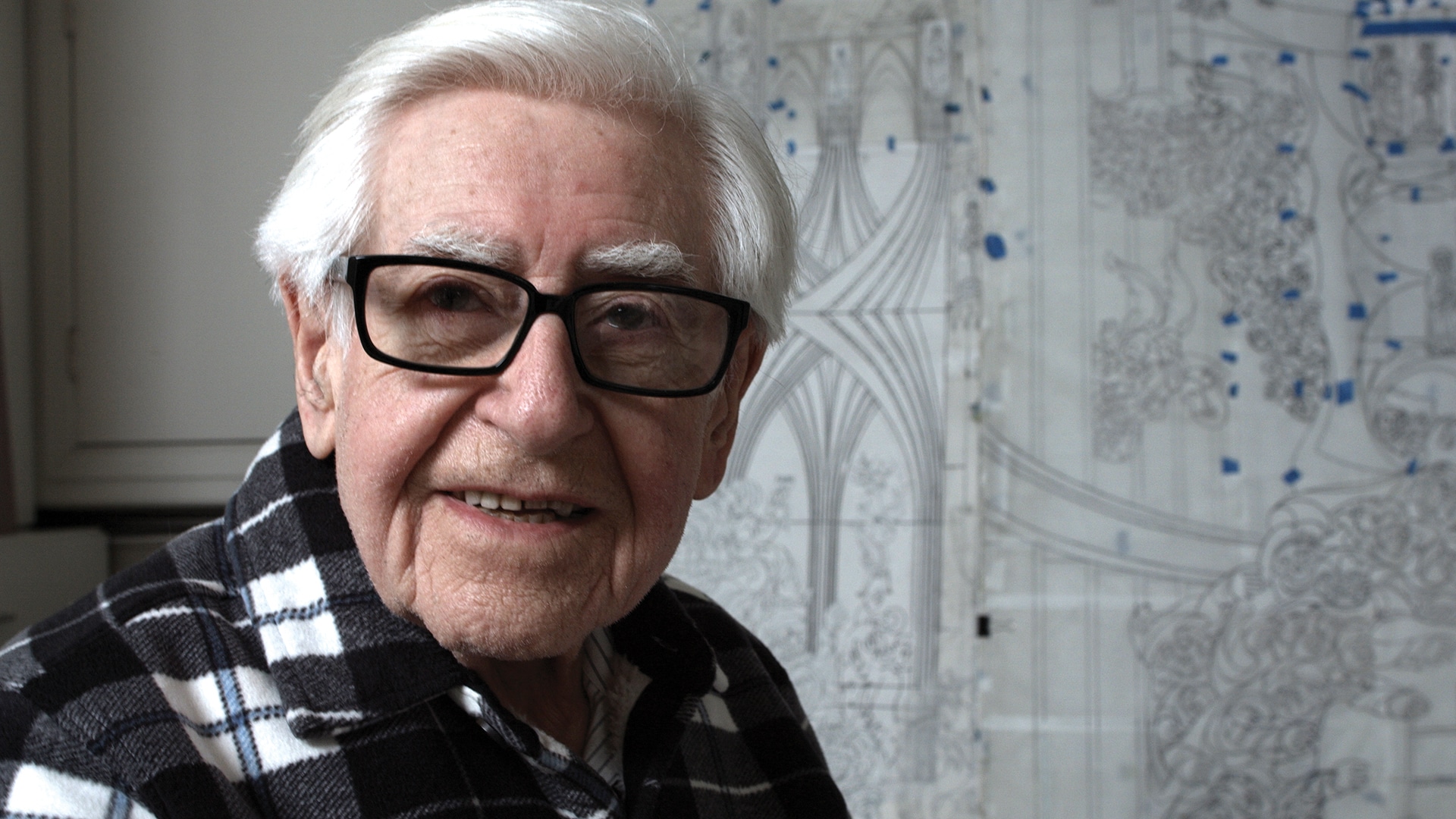
Anatole Krasnyansky
Krasnyansky doesn’t just use watercolor. He’s mastered it. Through years of study and experimentation, he has elevated the art form, creating singular watercolors that are as expressive as any oil painting.
While putting together a comprehensive catalog raisonné of Krasnyansky’s graphic works in 2013—titled Krasnyansky—we asked the artist to write down some of his thoughts on what attracted him to the watercolor medium.
Here’s what Krasnyansky told us…
ANATOLE KRASNYANSKY: When I am asked the question about why I prefer water-based paints in my work (acrylic and watercolor), I find it is not an easy question to answer.
When I was a student, I diligently studied the technique of watercolor, a medium often used by architects for their presentations of architectural designs, and I was exposed to it at an early age. Only serious study of this unforgiving technique will allow one to master it.
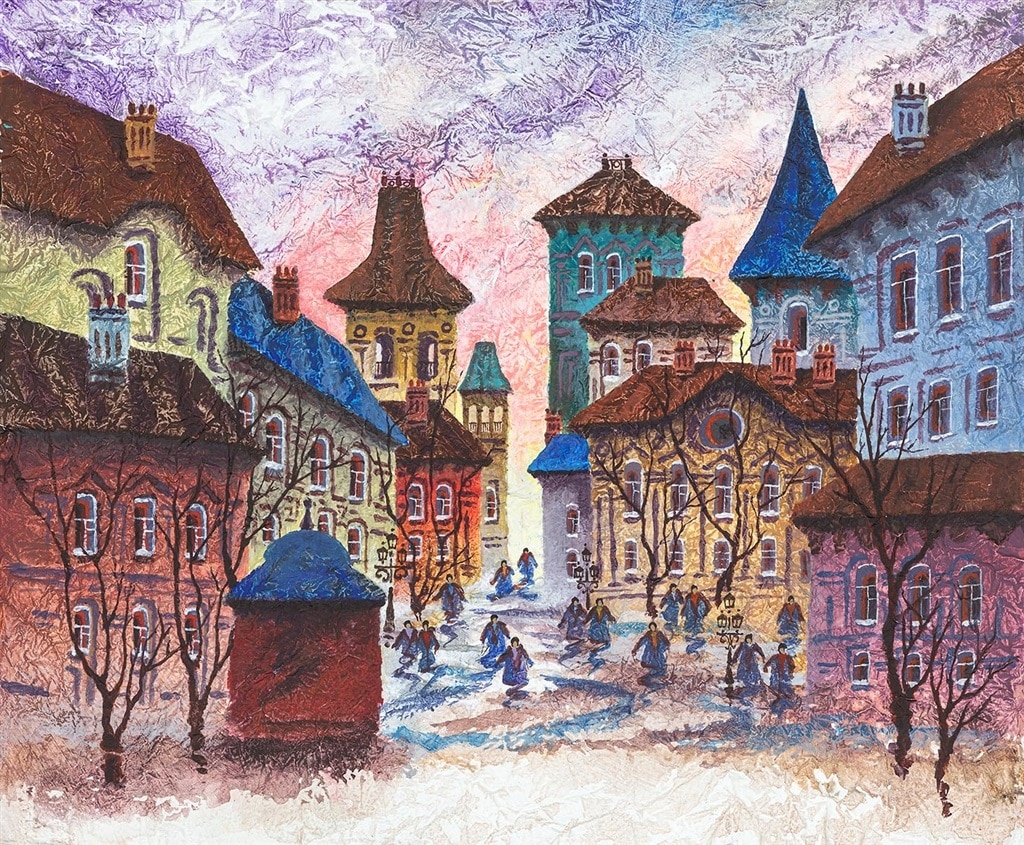
“Untitled 2” (2021), Anatole Krasnyansky
I have been fascinated with the art of ancient Egypt, along with Egyptian architecture, paintings on papyrus, and the invention of paper (which allowed the advent of printing techniques and the use of watercolor). I am also deeply interested in the art of central Tibet, especially from the time of Songtsen Gampo and his followers in the 7th century, who introduced Buddhism from China and India and created wonderful Buddhist paintings in tempera on cloth.
I have studied, with fascination, manuscripts from the 3rd through the 17th centuries, examining the art of miniature painting and Flemish multi-figurative, large-scale tapestries. In addition, Gothic, Romanesque, Renaissance, Baroque, and traditional Russian icons have influenced me greatly.
All of these influences triggered my desire to use water-based paint—watercolor, tempera, and, later, acrylic paint media, in particular. The idea to potentially bring back these ancient water-based mediums, applying them within our contemporary context, struck me, becoming the foundation for my new compositions.
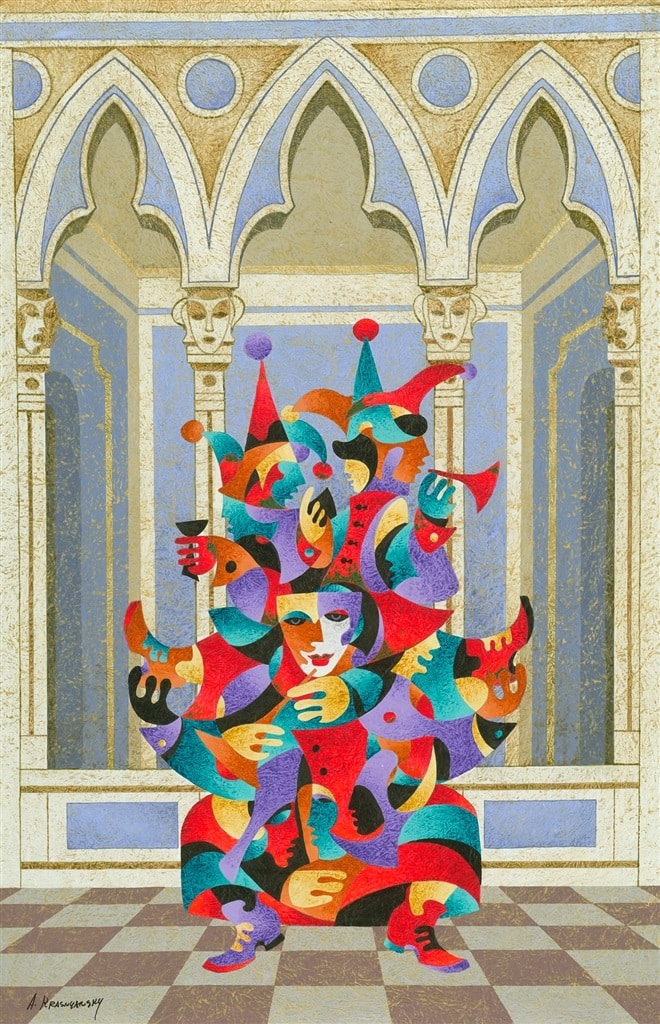
“Tranquil Conversation” (2012), Anatole Krasnyansky
Although watercolor has traditionally been viewed as a secondary medium when compared to oil painting, the idea of watercolor as the medium for a finished painting is not new.
Artists have used watercolor for “finished” landscape and seascape paintings, portraits, and compositions. These works were created using the academic watercolor technique of applying paint onto a passive flat surface of paper. The emotional response was based primarily on the mastery of the artist and rarely on the medium.
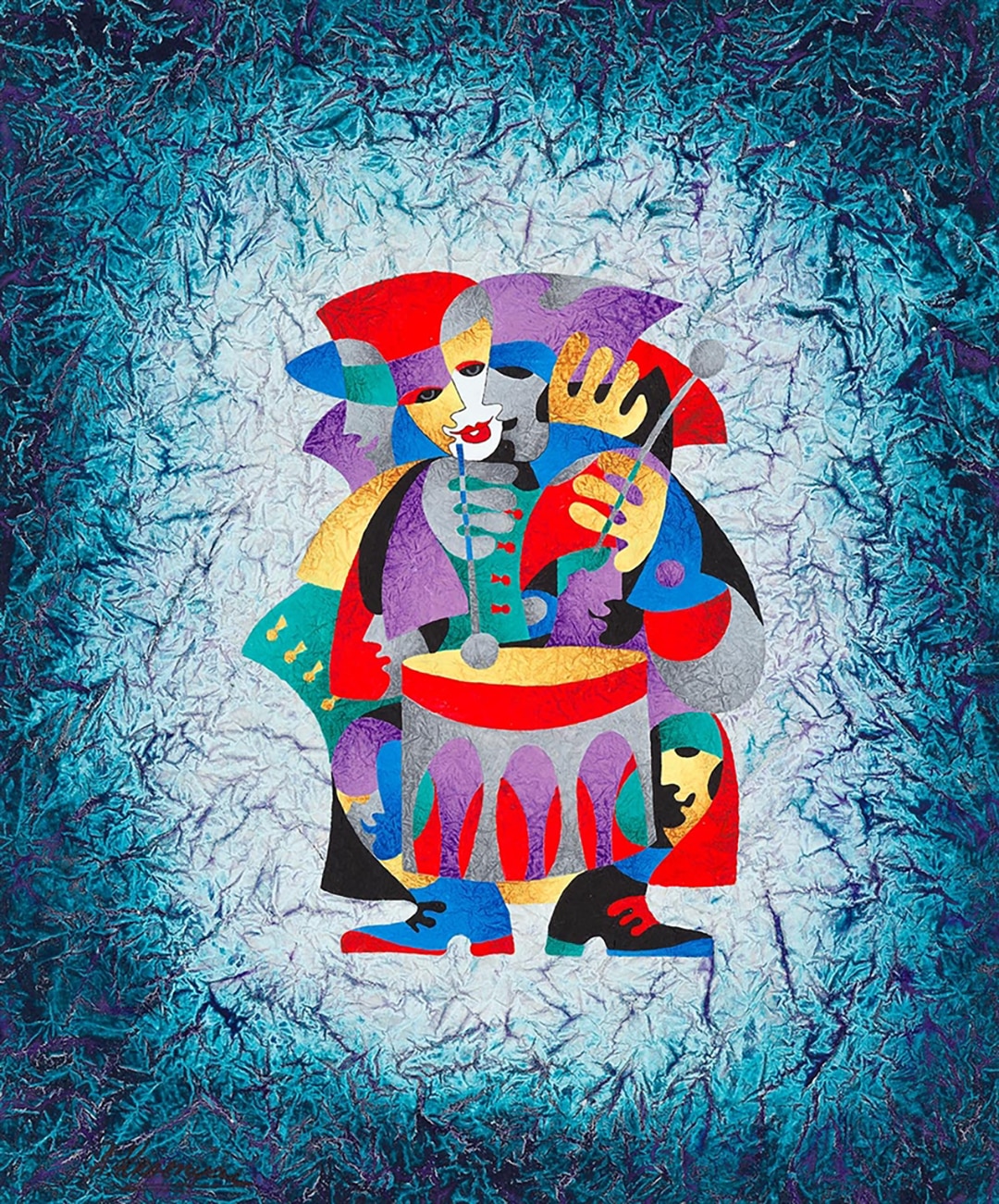
“Untitled 8” (2020), Anatole Krasnyansky
In contemplating this, I asked myself, “What is the secret of the emotional response found in oil painting?” Regarding watercolor, I asked, “Is it possible to elevate the emotional response of the viewer and raise the level of importance to that of an oil painting?”
I believe that this secret is found in the mastery of the painter, and this elusive response is achievable through the use of unique techniques incorporating applications of textured pigment and heavy brushstrokes, which can achieve a relief effect.
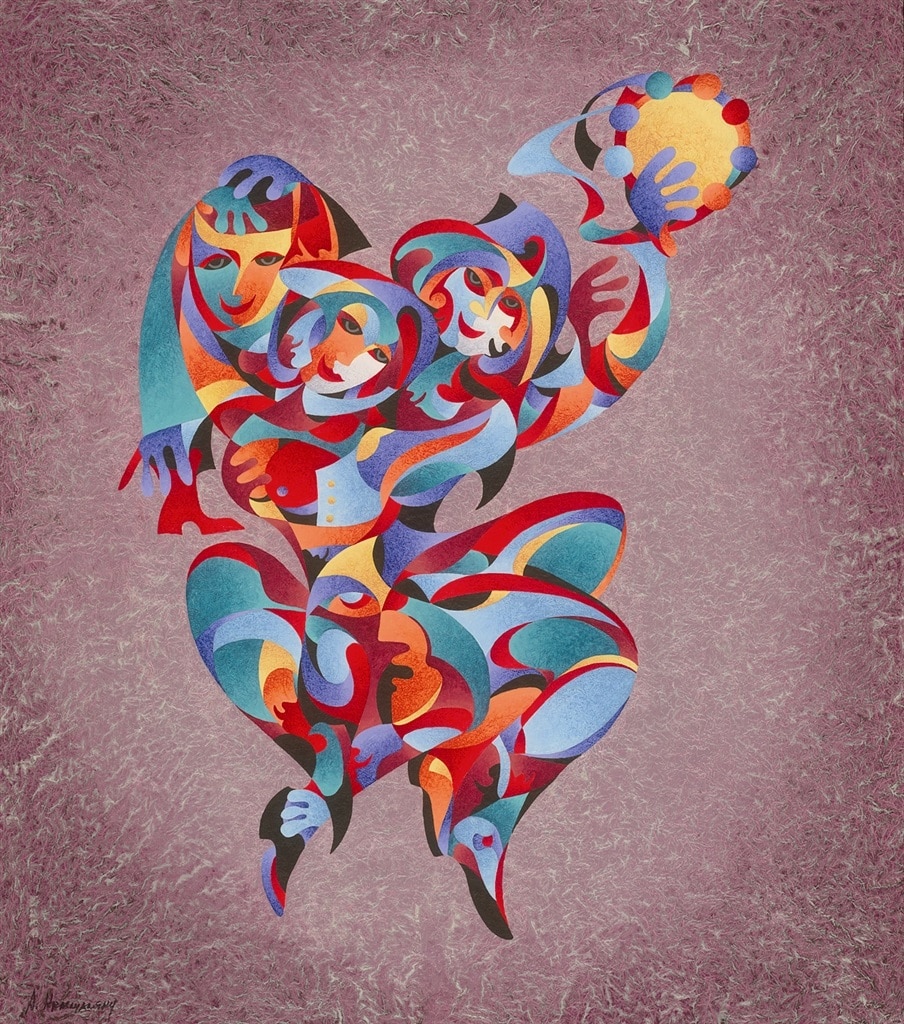
“Tambourine Twosome” (2007), Anatole Krasnyansky
After several years of study, I came to the conclusion that paper could become an active part of the watercolor medium, and I needed to devise a method to create different paper textures.
Finally, I discovered a way to do this and, through this method, I have been able to paint watercolors with a newly developed emotional power. I hope that I have, in some way, elevated the quality and importance of watercolor paintings, pushing them closer to the importance of oil paintings.
If you’re interested in the watercolors of Anatole Krasnyansky—or any of his other works—you can register for our exciting live online auctions or contact our gallery consultants at (800) 521-9654 ext. 4 or sales@parkwestgallery.com.




